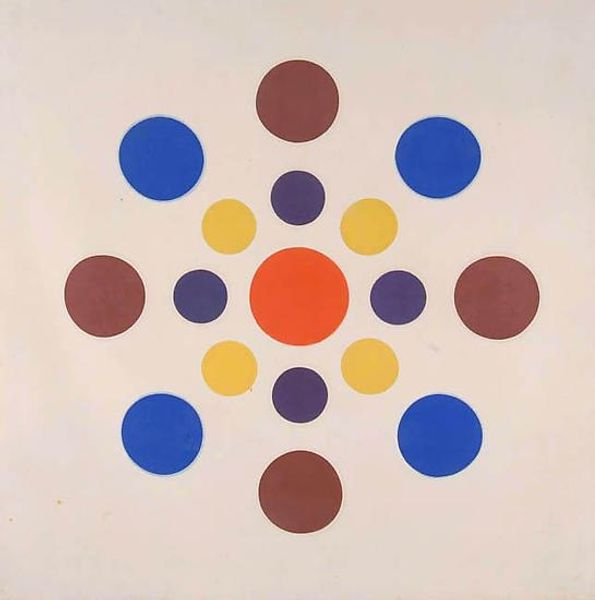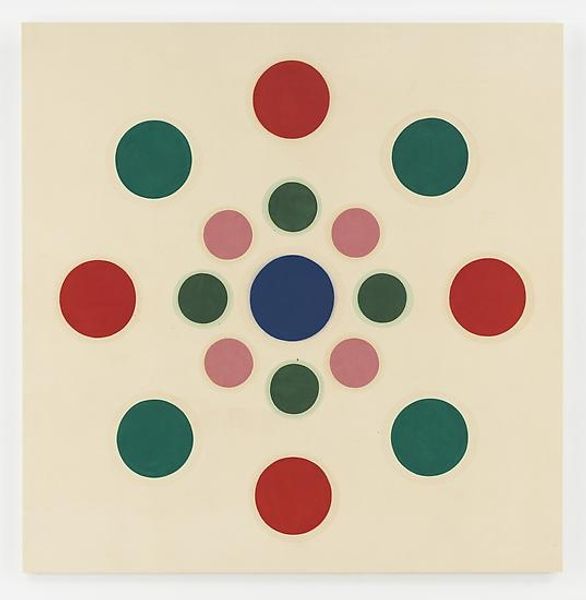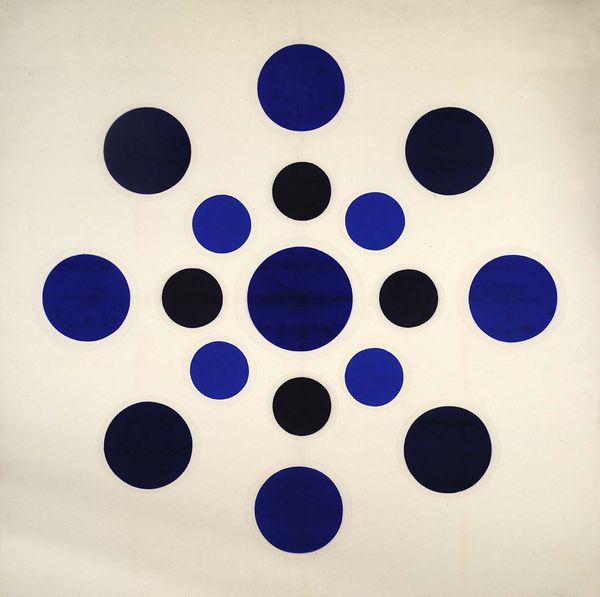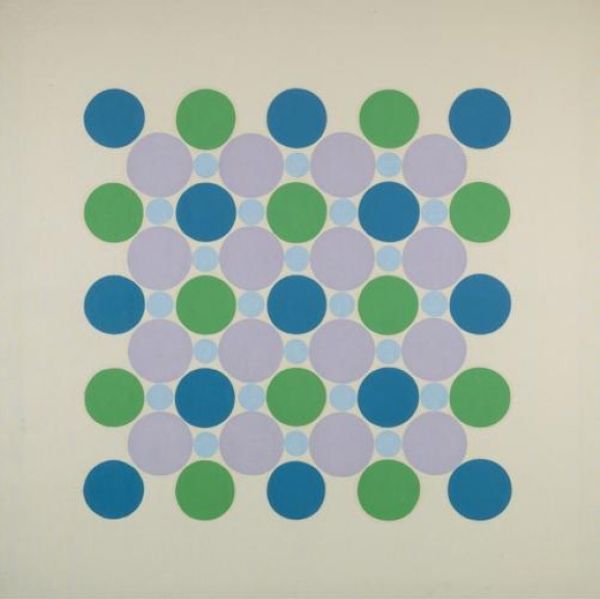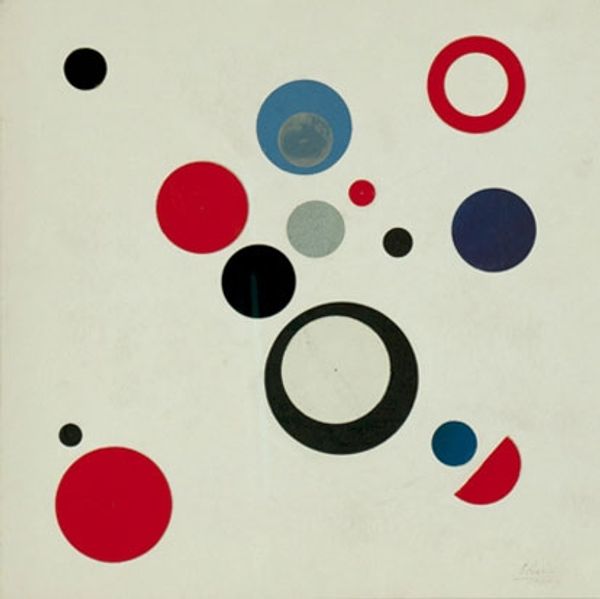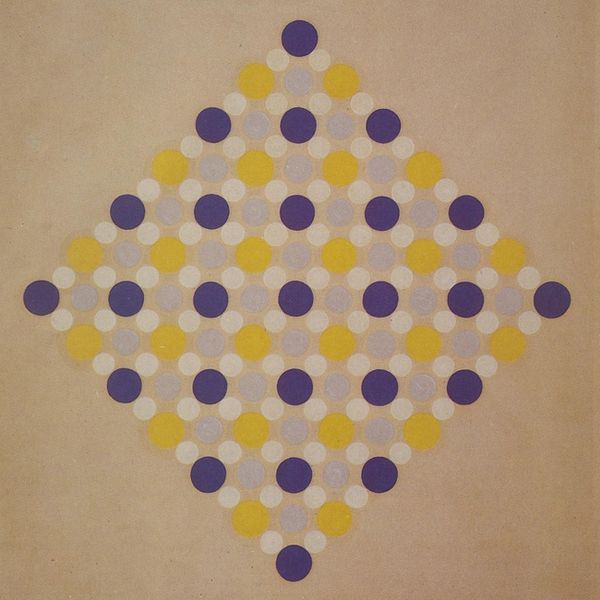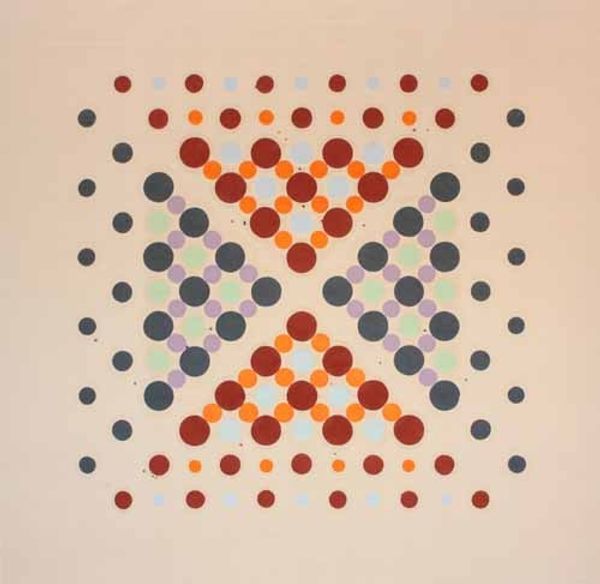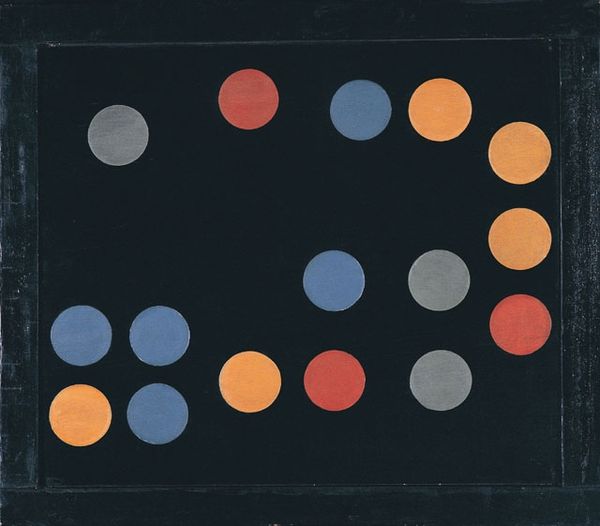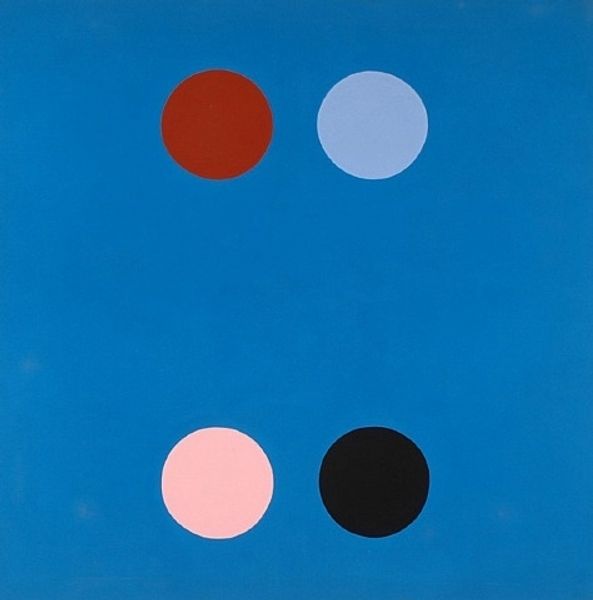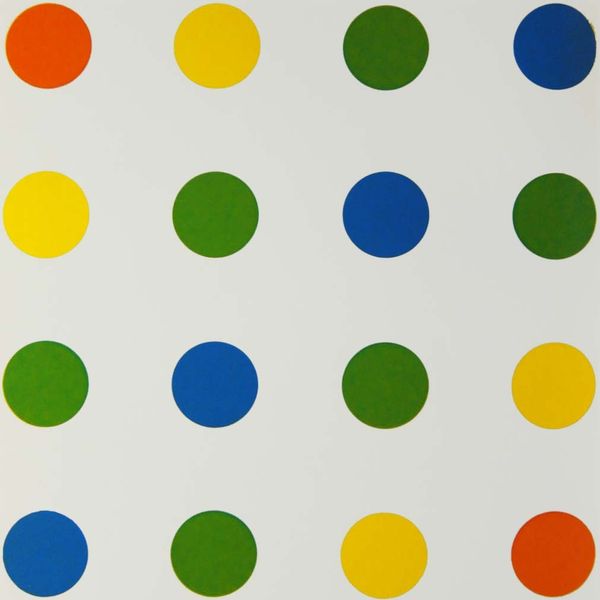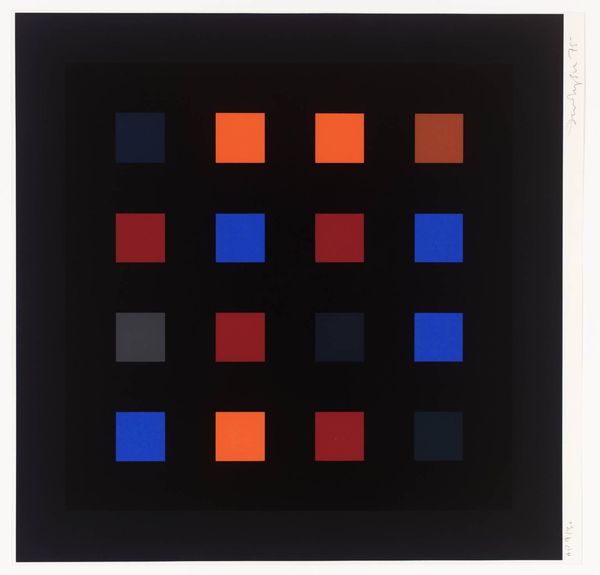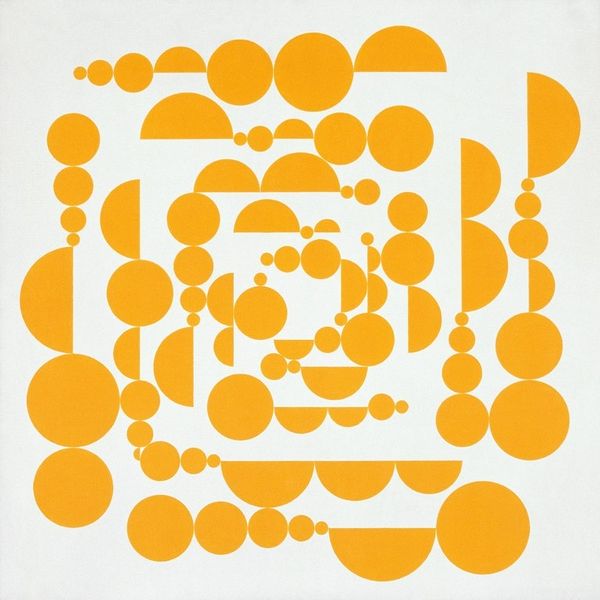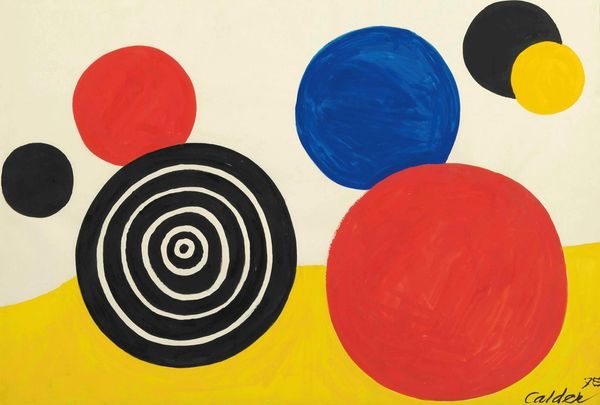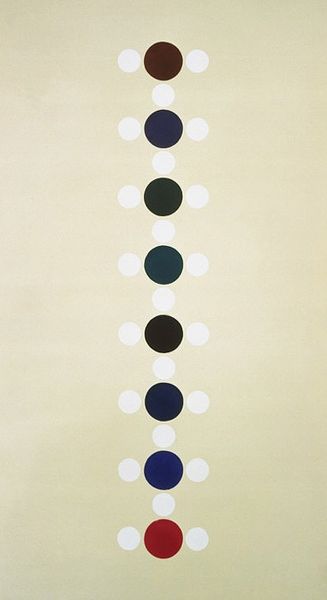
acrylic-paint
#
circle
#
pattern
#
pastel colours
#
colour-field-painting
#
acrylic-paint
#
geometric
#
abstraction
#
pop-art
#
line
#
hard-edge-painting
Copyright: Thomas Downing,Fair Use
Curator: This is Thomas Downing’s 1962 painting, "Dream Rate." Downing was associated with the Washington Color School, and this piece is acrylic on canvas. Editor: It's strangely hypnotic. All those perfectly placed circles in orange, gold, white, and blue…It looks both meticulously planned and playfully random, like a child’s game. Curator: The title “Dream Rate” makes me consider its place in the early 60s art scene. Color Field painting, of which Downing was a major figure, emerged partly as a reaction against the perceived angst of Abstract Expressionism. "Dream Rate", with its vibrant and contained energy, represents that shift away from emotional turmoil towards more objective explorations of color and form. The evenness of color, hard edge, and pattern gives order. Editor: The circles themselves…the circle is a universally powerful symbol, right? Wholeness, eternity, cycles of life…Here, though, repeated so rigidly, they almost feel like currency or units in a strange, new order. There's something optimistic in that geometry but also...a sense of cold perfection. Curator: Exactly. There is an engagement with the political mood of optimism prevalent in American culture, the fascination with technology and progress, reflected in these clean lines and manufactured perfection of form. The regular grid pattern and carefully chosen colors create a sense of harmony but maybe, you’re right, with a bit of societal detachment? The rise of hard-edge abstraction pushed away subjective touch for more "democratic" visuals for art in public spaces. Editor: Thinking of it now, a “dream rate” isn't a natural thing. We dream at our own rhythm, yet a “rate” makes the act commodifiable, ordered… This feels relevant here; each shape being stamped out with an objective and emotionless consistency. A beautiful order, and still eerie. Curator: Downing really pushes us to think about the promise and, perhaps, subtle alienation within geometric abstraction in post-war American art. The tension that it occupies between rigid structure, and then what looks to be like soft colors or hues makes you really contemplate these ideas. Editor: Ultimately, "Dream Rate" offers a moment of captivating simplicity but reminds us of cultural and political factors involved with art. What does a “dream” even look like when perfectly quantified? It provides a thought provoking message in deceptively minimal elements.
Comments
No comments
Be the first to comment and join the conversation on the ultimate creative platform.
